
About This Quiz
Carpentry is one of the oldest craft skills developed by humanity, and one of the most useful. It is a craft that has become increasingly advanced over time, despite the simplicity of woodworking's basic paradigm. In the early days of human civilization, woodworking would have provided simple shelters, not intended to last forever. Today, there are castles in Japan with wooden sections that have remained as they are for centuries. Ancient people carved decorations into simple wooden tools, but in the 18th century, Thomas Chippendale built furniture with exquisite wooden inlay that remains a marvel of craftsmanship and imagination in the 21st century. The tools used to cut and build with wood have evolved but remained more or less the same: blades, adhesives, nails, and rope. Thousands of years of human history provide the requisite skills and techniques to turn this simple material into nearly anything.
Today, woodworking remains an important craft, even if skyscrapers made of steel get all the glory. Increasing demand for items made from reclaimed wood (read: wood that was formerly used for some other structure) combined with contempt for mass-produced furnishings to give woodworkers a boost in the last couple of decades, and with many people learning to build and fix things on their own, the skills of the woodworker are finally being given their due.
The old saying goes "If the only tool you have is a hammer, then every problem looks like a nail." Will you nail every question, making plane your brilliance on the subject of woodworking, or will you take a licking from the lathe? Take this quiz and find out.

The density of wood is one of the most important variables in woodworking. Knowing the density of wood is very important when carving, and balsa is one of the softest woods available for the woodworker. Usually found in delicate wooden models, balsa is a very soft wood that requires a very light touch, otherwise the careless woodworker could have a blade slice through a thick piece of balsa with a single stroke, risking self-harm.
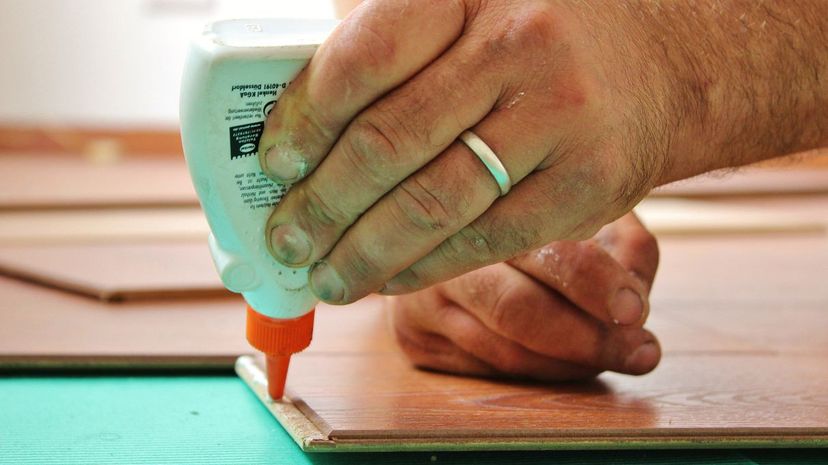
Creating layered materials is a technology that goes back centuries. Today, laminates surround us every day. Wood laminates have a variety of uses, from reinforcing members in wooden structures to covering walls in thin pieces of wood laminated to the wall to give the impression the wall is made of the same wood as the laminate.

Circular saws are power tools that should be familiar to anyone who enjoys carpentry, or horror movies. Essentially a powered metal disc with saw teeth cut into the edge, the purpose of a circular saw is to make clean, straight cuts. Some circular saws are designed to be used free of a specific table, while others are built into special tables designed for cutting wood along specific, pre-set angles.
Advertisement
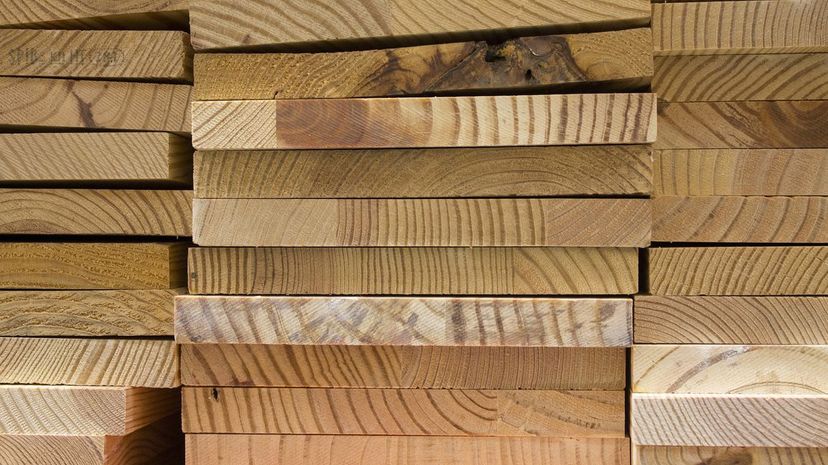
Seasoned timber is timber that, after being felled, is dried out partially. The reason for this practice is that one wants wood to be more or less the same level of moisture as the environment in which it will exist and be used. If making furniture intended for a very humid place, one would prefer wood that is less seasoned, but in a dryer environment, dryer is better.
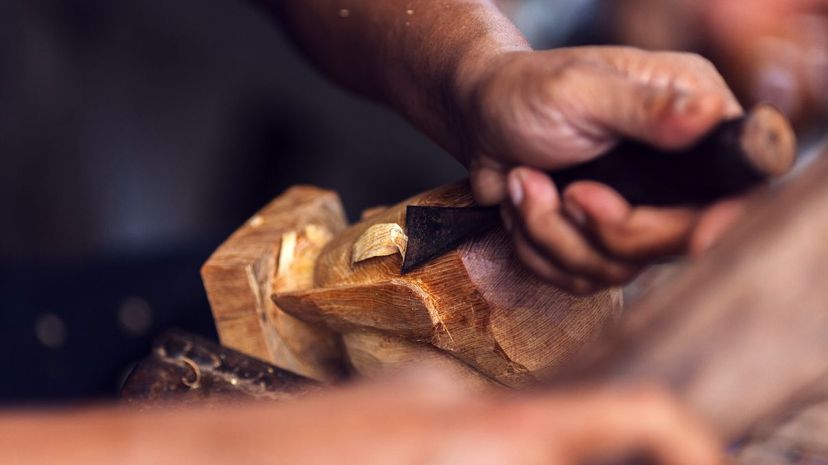
Especially when starting out in whittling, safety requires best practices. It is important to wear goggles or glasses as eye protection, to keep splinters from getting in one's eyes. It's important to wear special gloves designed to prevent cuts in case one's blade slips, and it's important to keep one's blade sharp, because that will mean it requires less force, and therefore there's less chance it will slip.
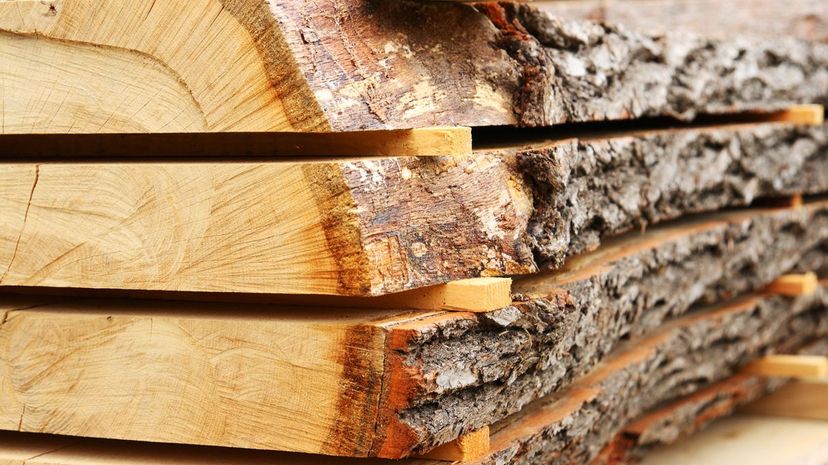
One problem one can run into with hardwoods like oak and maple is router burn, which results when a router, which is a power tool used to shape the edges of wooden objects, spins so fast the friction generates enough heat to darken the wood by burning it a little. This can be fixed either by changing the depth of the router to shave off the burn or through the rapid and zealous use of sandpaper.
Advertisement
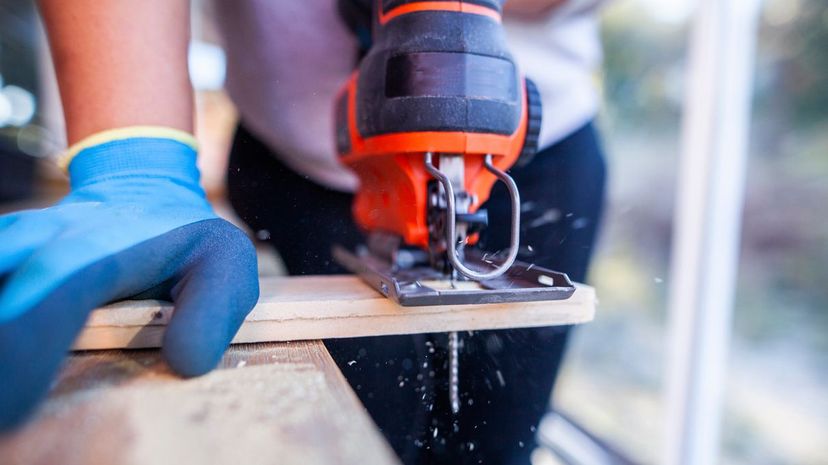
Like many crafts, woodworking has terminology that can be a bit confusing. Coping saws and jigsaws are actually the same thing: a kind of saw designed for making curved cuts into wood. Indeed, the "jigsaw puzzle" gets its name from the original method by which jigsaw puzzles were made. If you're ever confused about the name of a tool, look it up. You may already own it.

A hacking knife may be one of the oldest tools in the carpentry arsenal. Essentially a cross between an ax and a knife, a hacking knife is a tipless knife that vaguely resembles a miniature meat cleaver. Its intended purpose is to be wedged into place when a piece of wood needs to be carefully split and then tapped on the back edge of the blade with a hammer, forcing it into the wood with careful blow after careful blow.

A froe is a strange sort of duck-billed ax used on wood that has not been dried out yet. It is designed to be driven into wood in line with the grain, using a hammer. Once in the wood, the froe is twisted at the handle, thus causing the wood to split along the grain.
Advertisement
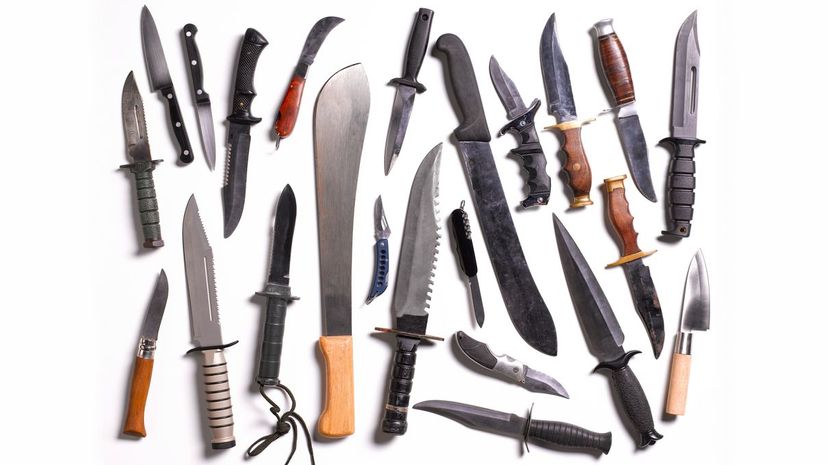
Whittling is popular in part because of its portability and because it can be done with a variety of blade types. For generations, pocket knives and hunting knives were considered the only acceptable knives for whittling, but in recent years, blade manufacturers have put out specialist whittling knives which do the job admirably, if little else. The karabit, on the other hand, is a combat knife with a curved blade, and not suited to whittling.
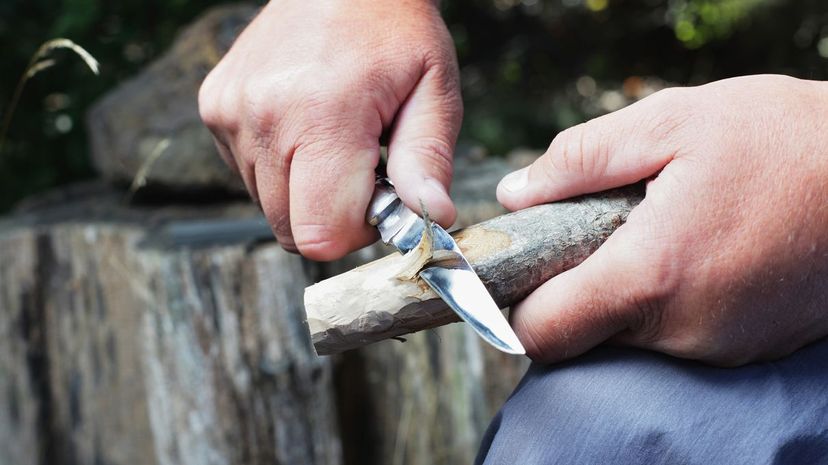
Whittling may not involve using large blades or power tools, but getting cut isn't a question of if, it's a question of when. There are many ways to use a knife to shape wood, but a pare cut, which involves pulling the blade toward the thumb, raises the odds of a self-inflicted injury. For those worried about accidental cuts, there are special gloves made for whittling which reduce the odds of cutting oneself.
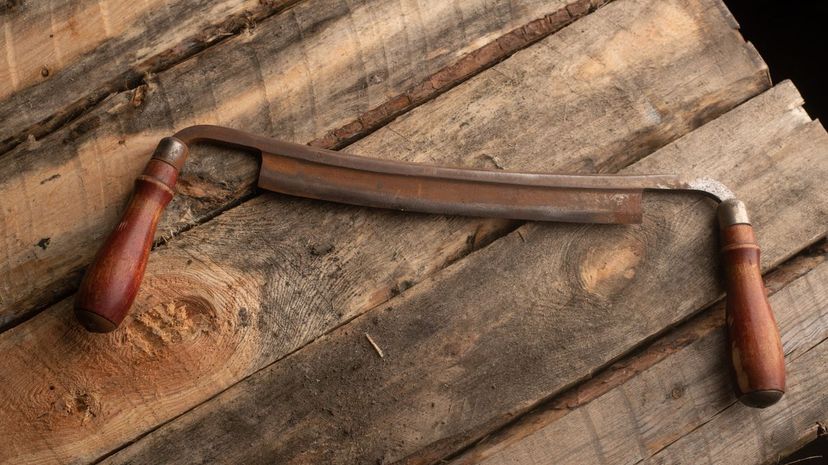
While all of these are real names of tools, only the spokeshave is a kind of drawknife. A drawknife is a kind of blade with handles on either end which is used by pulling it toward oneself. As a category, drawknives are used to cut shapes into wooden objects, making them concave, convex or making other shapes entirely. Spokeshaves are a specific type used originally for shaping the spokes of wheels.
Advertisement
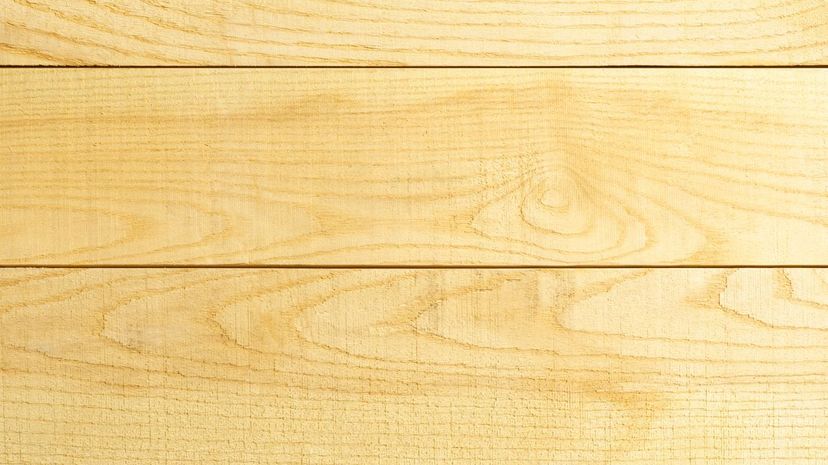
Like with any industry, the lumber business has its own lexicon. Just about everything has multiple names, from equipment to methods to products. Of the cuts of lumber though, the plain sawn variety has the most nicknames by a country mile.
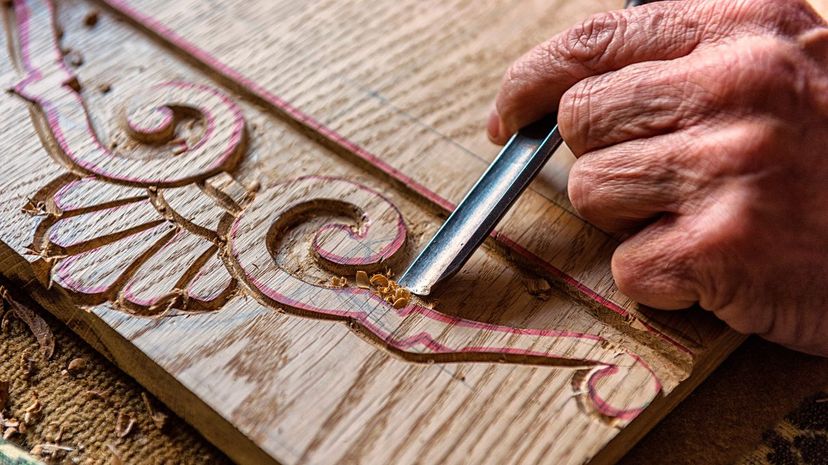
Chip carving is carving with a hammer and chisel, much as one might with stone, and is done by, as the name suggests, chipping away at the wood. Carving in the round is simply carving wooden objects to be viewed in 360 degrees. Relief carving isn't done in the bathroom, as the name might suggest, but is instead carving an image into a flat surface so that it creates the illusion of the image through raised surface area, like on a coin.
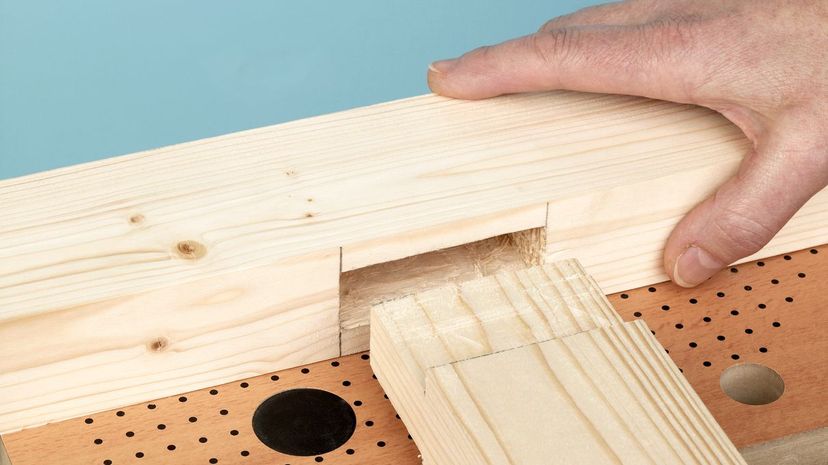
Most people probably aren't familiar with the terms "mortise and tenon" but they should be. One of the simplest ways to join two pieces of wood, they should be familiar to anyone who has made enough IKEA furniture. A mortise is a hole or depression cut into a piece of wood, and a tenon is a pointy bit shaped onto the end of another piece of wood, perfectly suited to wedge into the mortise.
Advertisement
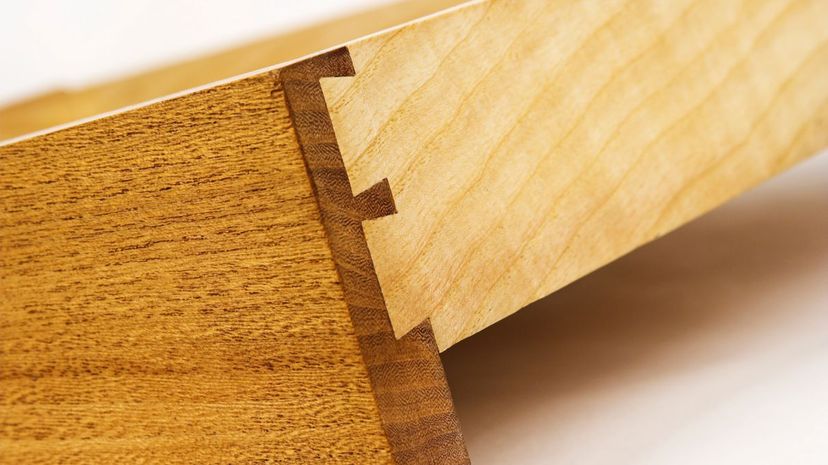
Dovetail joints are one of the most underappreciated feats of carpentry. A dovetail is a join where two pieces of wood fit together by the use of a series of interlocking notches. While most modern builders make dovetails with the use of special dovetail jigs and power tools, the double-lap dovetail is a dovetail only possible with hand tools, having the advantage of hiding the dovetail completely, thus making fine wood look unmarred.
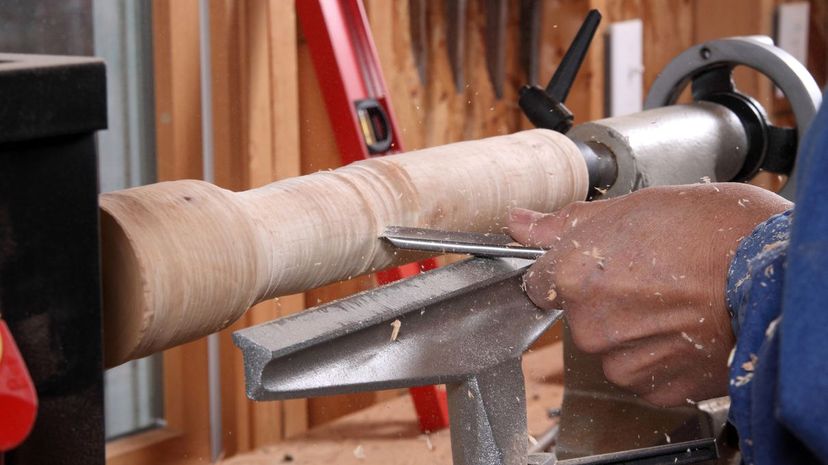
Wood turning is a fairly modern form of woodworking in which the wood is attached to a spindle that spins the wood in place as various types of cutting instruments are applied to the wood to shape it. The spinning action of the wood means the cutting tools do not need to move to exert force, but are simply put in place and the movement of the wood cuts itself.

Wood is porous and subject to the laws of physics in ways other building materials are not. As such, wood is vulnerable to damage in ways other materials are not, but it's also capable of being repaired via many of the same forces. If the wood hasn't been sealed off yet, small dents can be treated by forcing moisture into the wood and forcing it to expand via the above method.
Advertisement
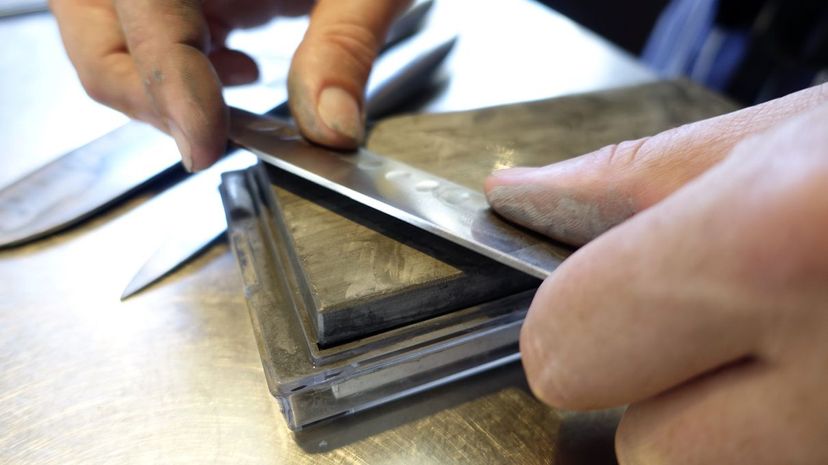
Oil whetstones work by rubbing the blade against the stone at an angle, with the addition of oil to lubricate where they meet. The texture and hardness of the stone polishes away some of the blade's metal, creating a sharp edge. Most stones come in several grades, from coarse to fine, but aluminum oxide is the variety that produces the finest edges.
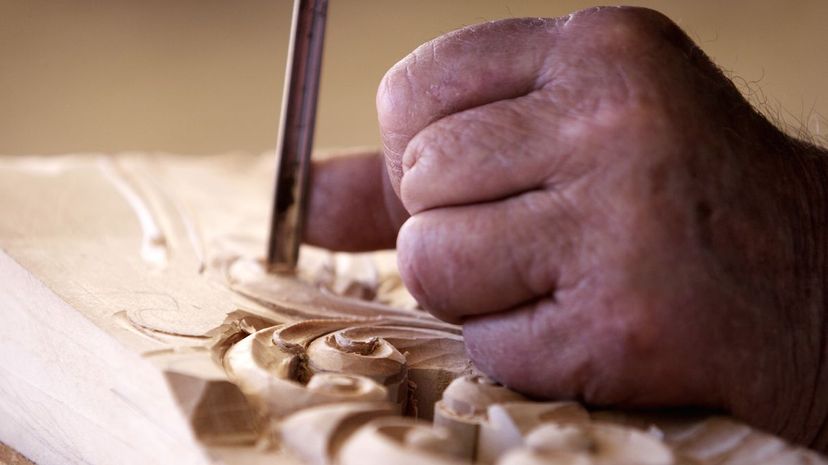
Gouges and bedan chisels are both chisels, but they are different from each other. A bedan chisel's end is a steeply raked square end, which, with calipers, is often used in wood turning to gently remove wood in precise quantities. A gouge has a semicircular blade end which cuts into and scoops out (gouging) wood, thus enabling woodworkers to create depressions or grooves in wood.
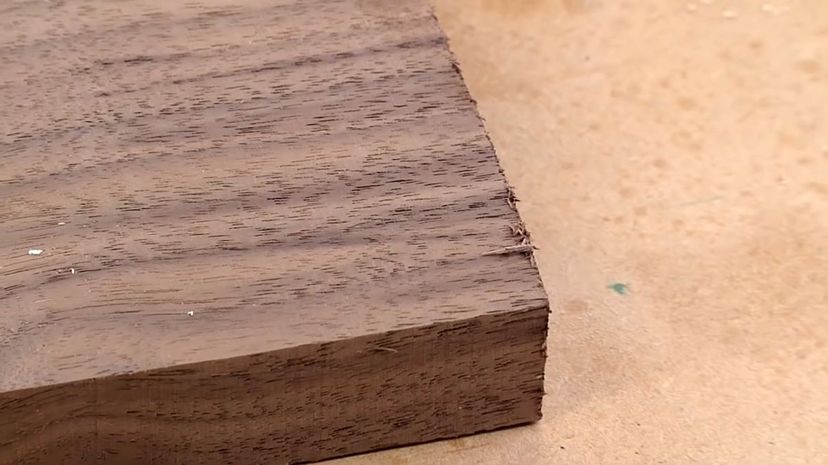
Tear-out is when wood breaks or splinters along the grain while being worked. This can happen when drilling or cutting the wood and is easily repaired with modern tools. Sanding the wood a little to stop the damage from getting worse followed by the application of wood filler will make good the damage, and the judicious use of colored pencils to simulate the grain of the wood will conceal it for good.
Advertisement
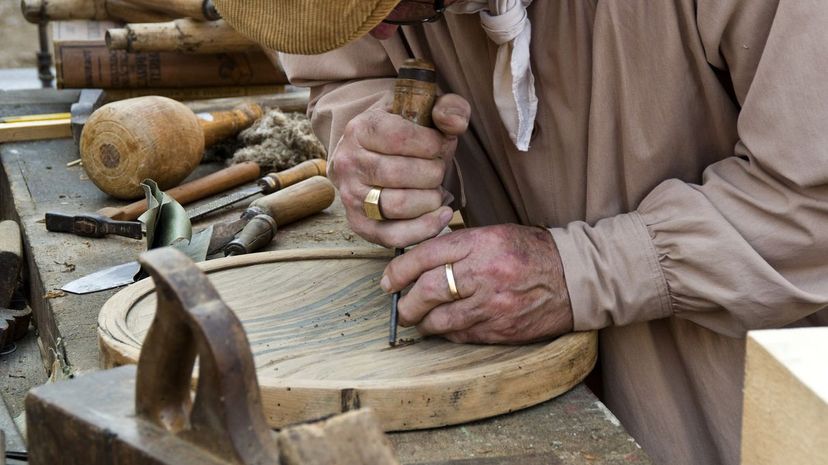
When starting out in woodworking, it's important to choose woods very carefully. Butternut, for example, is a soft wood, good for carving by hand. Sugar maple and white oak are both hardwoods which are much more difficult to cut with hand tools, but hardly impossible to work with. Brazilian purpleheart, on the other hand, is a kind of ironwood. Ironwood is notoriously difficult to work, hence the name.
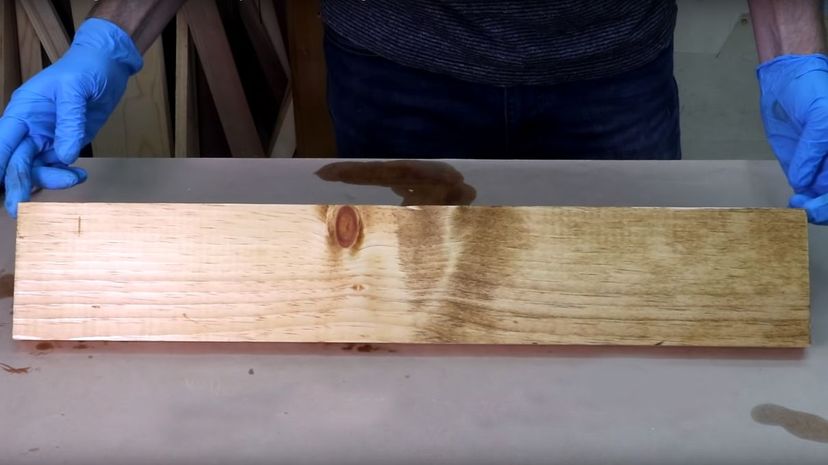
Not all kinds of wood absorb oils the same way. This is why teak and oak are treated with different oils, after all! When one uses too much oil for the wood in question, it can result in blotches on the finish of the wood. To mend this, simply apply shellack or varnish (a finish) or sand sealer (a pore finishing product).
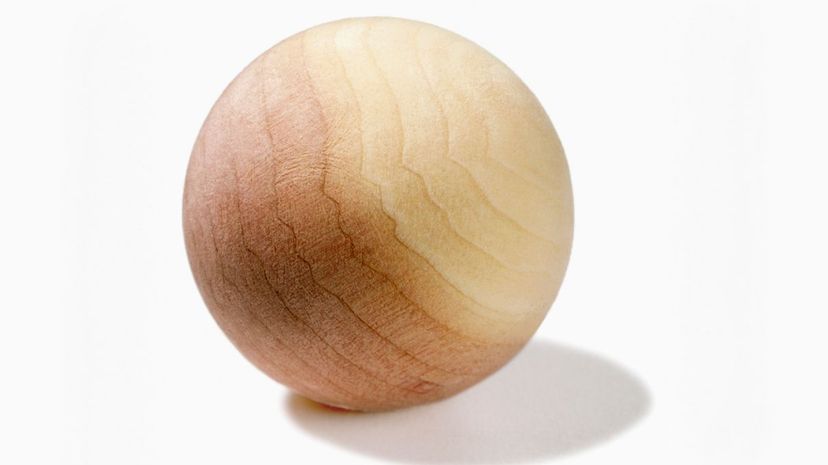
Aromatic cedar is a type of cedar that only comes from a small region of Canada, and has been prized for its unusual property for a long time. This type of cedar is the variety you may currently have in your closet in the form of blocks meant to repel moths, but there are also carpenters who use it to make whole cabinets which repel moths, keeping woolen clothes safe.
Advertisement
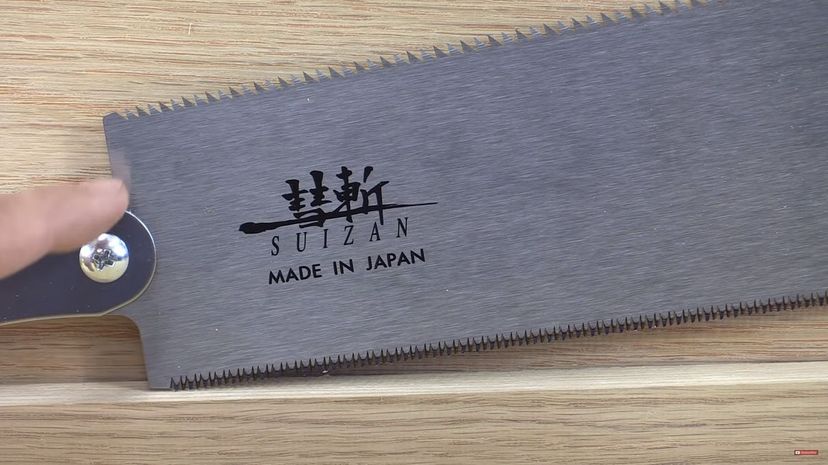
Traditional Japanese hand saws are different from western saws in one major way. While most western saws are push saws, meaning the teeth cut as the user pushes, Japanese saws are pull saws, where the teeth engage in cutting as the user pulls the saw toward them. Pulling actually engages larger muscle groups, and thus makes the cutting easier to do, which means the user doesn't work as hard and can use saws to do very careful detail cutting.
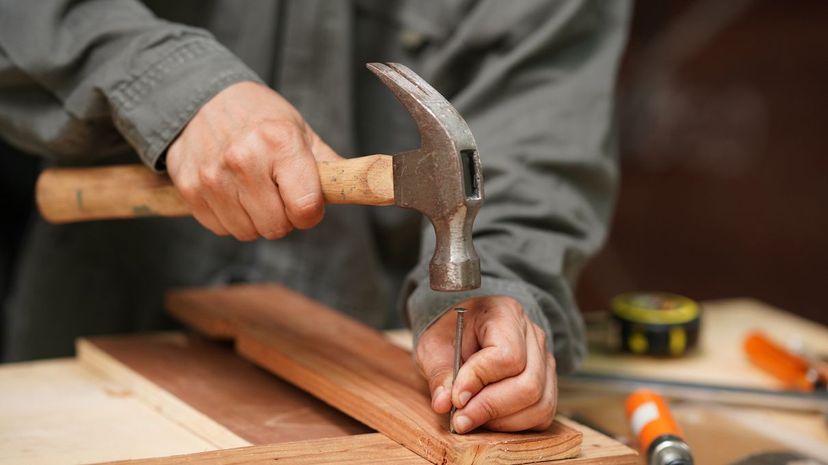
Claw hammers' "claw" isn't a reference to the nail pull on the back of the hammer. Claw hammers' heads curve, to make nail removal easier by rocking the hammer back. Framing hammers are designed to hammer nails in flush without affecting the surrounding area, and they are much heavier. The term "framing" has nothing to do with pictures, and everything to do with building frames.

"Measure twice, cut once," is one of the classic woodworking expressions for good reason. Obviously, when making something out of wood, one can always remove more wood from a piece in order to make it fit, but one can't add to it. For this reason, it is prudent to carefully and repeatedly measure the section one wants to cut to ensure one has cut the correct amount.
Advertisement
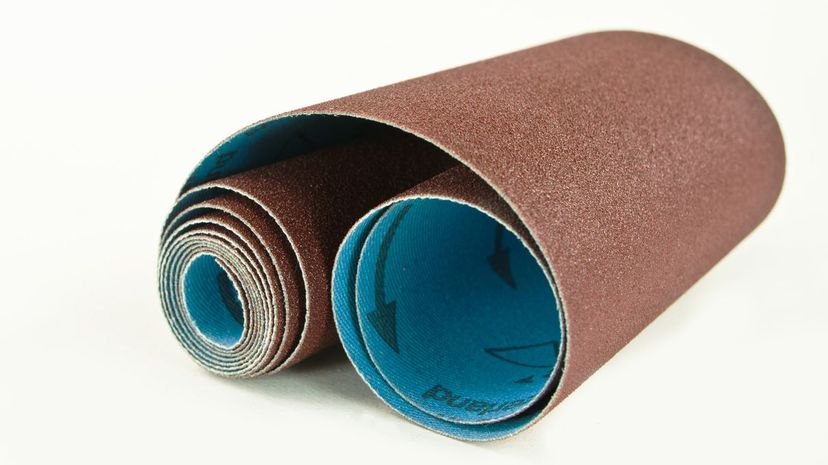
Sandpaper comes in a host of types, made of many materials, for many purposes. Rough sandpaper, like the 40-60 grit range, is used in heavy sanding work, like stripping the finish off a piece of wood. 180-300 grit sandpaper would be useful in smoothing off any imperfections in a piece. 800-1,000 grit sandpaper is only used for the final polish, when the wood needs to be as smooth as glass. It can even be used to hone knives to razor-sharp perfection.
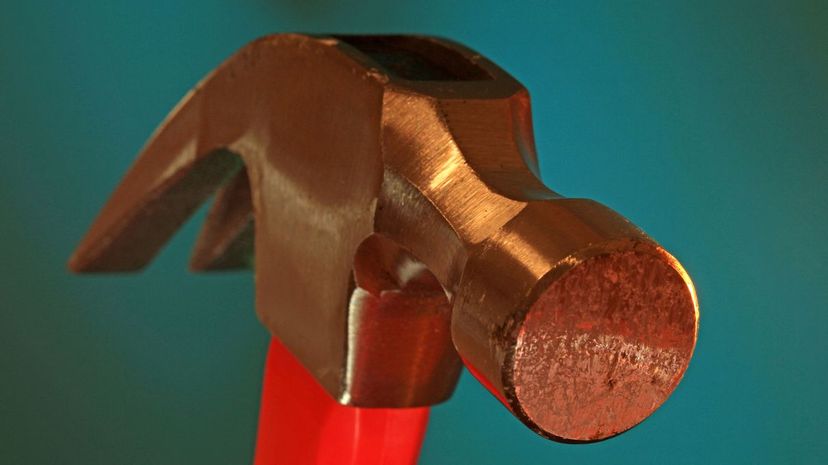
Most modern hammers don't rust because they are either made of stainless steel, or coated somehow. Additionally, modern hammer handles last decades. What's important to be aware of is how polished the head becomes over time. The head of the hammer should have a texture to it, to prevent the hammer from slipping off nails, but if it gets polished off through use, the hammer needs upkeep or replacement.

Lignum vitae is a particularly gorgeous ironwood, known for being both dense and full of natural oils. It is so tough that it has been used to make billy clubs for police, as well as, due to its self-lubricating qualities, bearings in mechanical machines from clocks to ships. It was even used in "The Once And Future King" as the wood of Merlin's wand. It's even the national tree of The Bahamas.
Advertisement
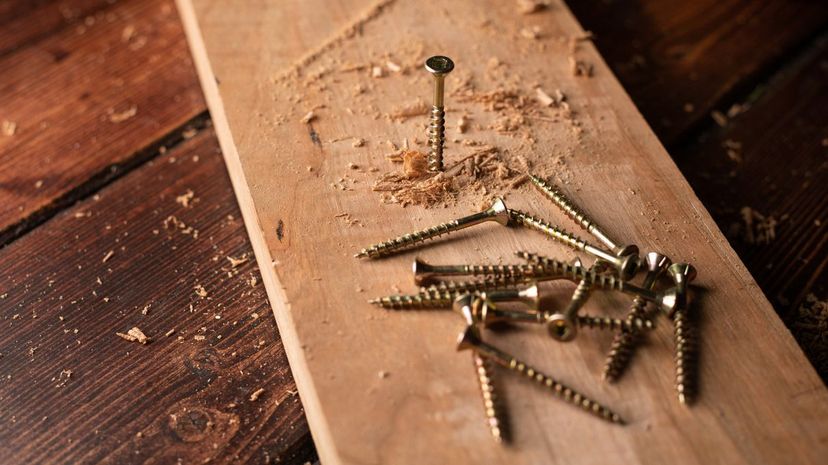
Wood screws take up physical space, so when working with them, it's important to make room for them in the wood, otherwise the wood can split or change shape when the screw goes in. This is done simply enough by drilling a hole into the wood before driving the screw home. The trick, of course, is ensuring that the drill bit is just a little narrower than the screw.
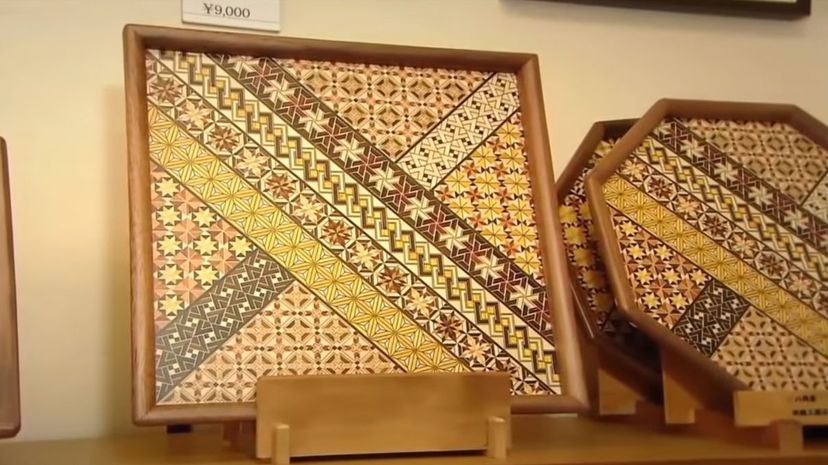
Often seen adorning the exterior of Japanese puzzle boxes, Japanese marquetry is made by gluing several long pieces of wood together into a tessellated pattern. The glued bundle is then cut into smaller bundles of the pattern. Finally, those pieces are glued to each other to form a large plate of the repeating pattern, which has layers shaved off with a fine lathe and glued to the object it will adorn, like wallpaper.
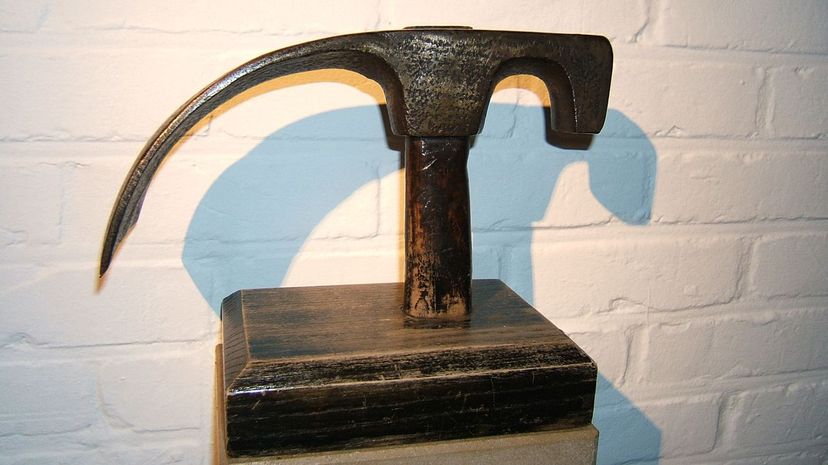
One can be forgiven for not knowing much about the humble adze, unless one is from Alaska or parts of the South Pacific where it is still in use. An adze is essentially a kind of ax designed specifically for woodworking. Used to shape wood, often while it's being fit into a larger object, an adze is an ax where the blade is perpendicular to the handle, often made of stone, bone or metal.
Advertisement
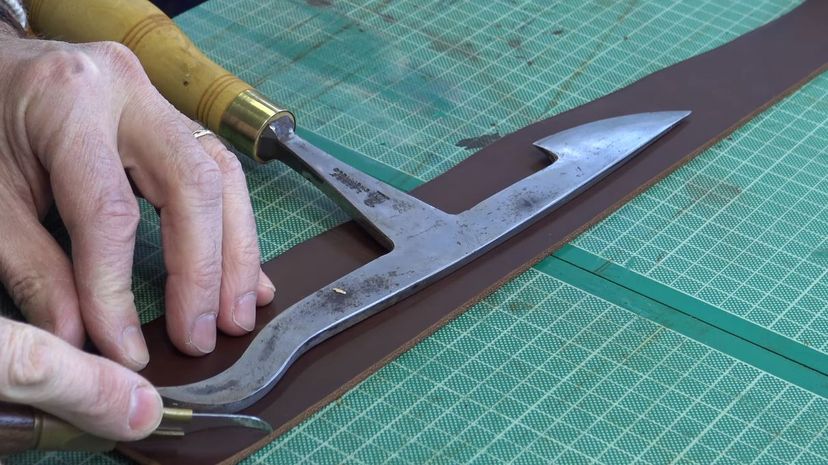
The twybil may seem like an obscure tool, but for anyone who knows about building large wooden structures, it shouldn't be too unfamiliar because it's perfect for making mortise and tenon joints, which, requiring both leverage and force to cut, require both the adze and the ax. Since the twybil isn't for felling wood but shaping it, its use usually involves swinging it into the wood and jerking it back and forth to separate sections of wood.
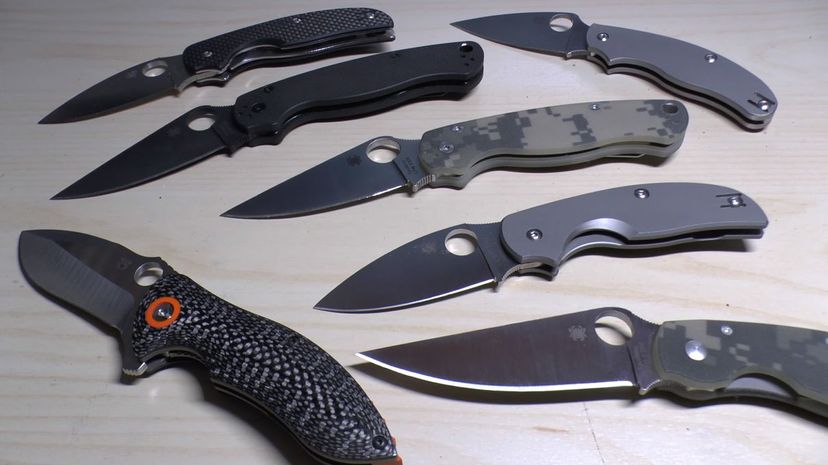
Knife buyers have to decide which is better: holding an edge a very long time, or ease of sharpening. Softer steel sharpens easily but dulls faster. X50CrMoV15 is great, used by European kitchen knife makers, but it is prized in part for ease of sharpening. D2 is used in many tools besides knives, for its toughness, but also flex. AUS-8 is soft and cheap. CPM-S30V is very expensive, but super hard, and will hold an edge for a very long time.